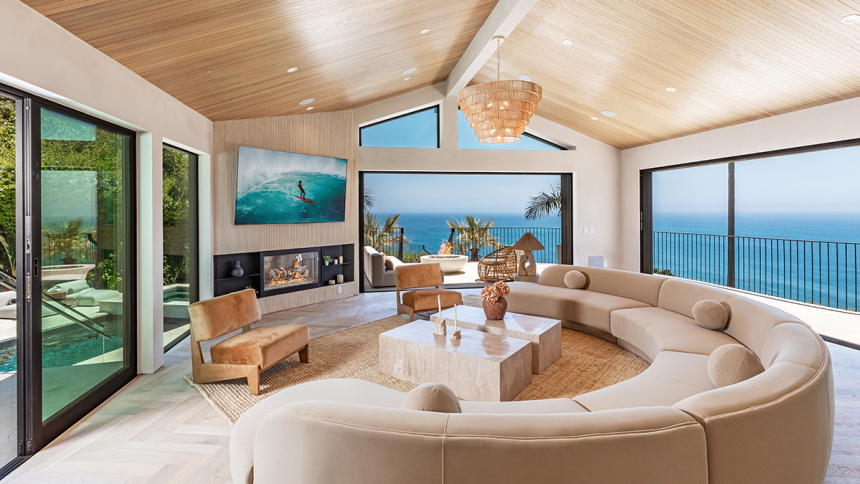Malibu, with its stunning coastlines and steep cliffs, has long been a symbol of upscale living. The area draws architects who want to design homes that blend into the natural surroundings while meeting the area’s unique challenges. Building on these rugged slopes takes both technical know-how and creativity, combining design with a real understanding of nature’s forces.
Creating homes in tough terrain takes more than just good ideas; it requires respect for the land. It’s a balancing act—combining bold design with the practical realities of building near the ocean. The result? Homes that reflect the owners’ desires while staying connected to the land. In these projects, Malibu architects work closely with engineers to turn complex terrain into livable, lasting spaces.
Building Where the Land Fights Back
Building homes on Malibu’s cliffs takes a solid grasp of the geology and risks. The land can shift without warning, so architects must study slope stability before designing. Once the ground’s behavior is understood, it’s time to choose foundation methods that work with the terrain’s natural shape. This preparation helps make the structure part of the cliff, not just placed on it.
Drilled pier foundations are one option that gives strong support and keeps the view open. These piers go deep into the bedrock, helping prevent movement from erosion or shifting land. As homes settle into the hillside, choosing the right foundation method supports long-term strength without blocking the views.
Designing for Pacific Light Without Compromise
Homes in Malibu are designed to capture the shifting light throughout the day. Thoughtful design lets sunlight move naturally through the space, adding comfort and appeal. Architects use large glass panels in key spots to bring in sunlight without causing glare or overheating. The key is balancing openness and protection—welcoming nature without making the home feel too exposed.
Clerestory windows are a favorite tool for adding more natural light to deeper parts of the house. These high-up windows let soft light pour in from above, highlighting interiors while keeping privacy intact. They also bring a sense of connection to the sky. Working with your architect on window placement can help tie different levels of your home together while keeping that Malibu sky in view.
Managing Regulations and Preserving Views
Building homes on Malibu’s cliffs means dealing with detailed local rules and permit steps. Every project needs to go through the Coastal Development Permit process, which checks that designs respect the community’s values and the environment. Architects have to bring fresh ideas that still fit within strict guidelines—walking the line between creative vision and what’s allowed.
View rights, often a sensitive topic among neighbors, can make or break a project. Using features like frameless glass railings keeps sightlines open while still being safe. These choices not only look sleek but also help during the permit process. Talking to a local zoning expert early on can help smooth out the complexities.
Material Choices That Withstand Salt, Wind and Time
Building near the ocean demands materials that won’t give in to salt-laden air and relentless wind. It’s not just about durability—it’s about choosing finishes that age with character. Unfinished bronze, stainless steel, and fiber cement perform well in coastal environments while complementing the rugged backdrop.
Pairing raw concrete with metal details can create a clean, modern contrast that resists decay. These aren’t just aesthetic decisions—they directly impact how the home holds up over time. A contractor familiar with Malibu’s climate can help you select materials that suit both your design vision and the coast’s challenging conditions.
Architectural Flow That Feels Anchored Yet Weightless
Malibu home design is about finding that middle ground between grounded and free. The rugged land is matched with open, airy spaces that invite in the outside world. Smart layouts make it easy to move from one room to another, often blending indoor and outdoor areas. Large, sliding glass doors create that smooth transition while letting in ocean breezes.
Terraces and cantilevered decks stretch out over the edge, giving the feeling of floating above the coastline. Open-concept spaces allow sunlight to flow across surfaces, creating a bright and uplifting feel. If you’re building in Malibu, think about using biophilic design—bringing nature into your home—to deepen that indoor-outdoor connection and highlight your surroundings.
Building on Malibu’s cliffs means creating harmony between architecture and nature. Every decision—from foundation type to window placement—has to respect the land and its forces. Homes need to breathe with the ocean winds, absorb the shifting light, and stand firm against salt and time. Working with local experts early can help you sidestep setbacks and find smarter, more lasting solutions. A successful design doesn’t dominate the terrain—it belongs to it. The most memorable homes don’t just sit on cliffs; they extend from them, letting light, air, and land shape how people feel inside. That’s where livability truly begins.
Lynn Martelli is an editor at Readability. She received her MFA in Creative Writing from Antioch University and has worked as an editor for over 10 years. Lynn has edited a wide variety of books, including fiction, non-fiction, memoirs, and more. In her free time, Lynn enjoys reading, writing, and spending time with her family and friends.















